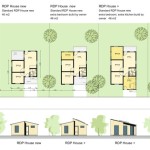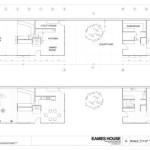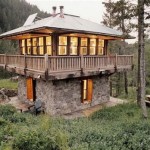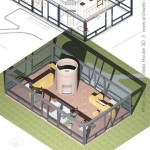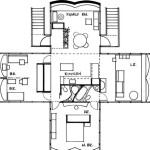Using Google SketchUp for House Plans
Google SketchUp presents a viable option for creating house plans, offering a balance between ease of use and robust functionality. While professional architects often utilize more advanced software, SketchUp's accessibility and free version make it an attractive choice for homeowners, DIY enthusiasts, and those exploring preliminary design concepts. This article will explore the benefits, workflow, and considerations for using SketchUp in house plan development.
One of the key strengths of SketchUp is its intuitive interface. The core tools are relatively simple to learn, allowing users to quickly grasp the basics of 3D modeling. Drawing walls, windows, and doors involves straightforward clicking and dragging actions. This user-friendly approach significantly reduces the learning curve compared to complex CAD software, empowering individuals with minimal prior experience to visualize their design ideas in a three-dimensional environment.
SketchUp’s extensive library of pre-made components further enhances its usability. Users can access a vast collection of furniture, appliances, fixtures, and other elements, significantly expediting the furnishing and detailing process. This allows for a more realistic visualization of the finished space and aids in evaluating design choices related to space planning and interior design.
The 3D modeling environment offered by SketchUp provides a significant advantage over traditional 2D drafting methods. Being able to view the design from various angles and even “walk through” the virtual model offers a more comprehensive understanding of the spatial relationships and overall design aesthetic. This immersive experience helps identify potential design flaws or areas for improvement early in the planning stages, which can prevent costly revisions later in the construction process.
Creating accurate and scaled drawings is critical for house plans. SketchUp allows users to work with precise dimensions, ensuring that the digital model accurately reflects the intended real-world dimensions. This accuracy is essential for cost estimation, material takeoffs, and ultimately, the successful construction of the house. The software also facilitates the creation of 2D plans, sections, and elevations from the 3D model, providing the necessary documentation for building permits and construction.
While SketchUp offers a user-friendly experience, creating comprehensive house plans requires a structured workflow. Typically, the process begins with defining the site boundaries and creating the basic footprint of the house. Walls are then erected, defining the layout of rooms and circulation spaces. Next, windows, doors, and other openings are added, followed by the incorporation of interior elements such as stairs, cabinetry, and fixtures. Throughout this process, regular checks for dimensional accuracy are crucial.
SketchUp also facilitates the integration of terrain data. Users can import topographical information to accurately represent the site’s contours and slopes, allowing for a more realistic assessment of the building's relationship to its surroundings. This is particularly important for projects on sloped sites or those involving significant landscaping considerations.
While SketchUp is a powerful tool, it’s important to acknowledge its limitations. It doesn’t possess the advanced structural analysis capabilities of dedicated architectural software. Therefore, for complex structural designs, consulting with a structural engineer remains essential. Additionally, while SketchUp can produce detailed drawings, generating construction-ready documentation with all necessary annotations and specifications might require supplementary tools or exporting the model to other CAD software.
Various resources are available to enhance SketchUp proficiency. Online tutorials, forums, and training courses provide valuable guidance on utilizing the software's features effectively. Exploring these resources can significantly accelerate the learning process and unlock more advanced modeling techniques.
The choice between the free and pro versions of SketchUp depends on the user's needs and project complexity. The free version, SketchUp Free, provides a solid foundation for basic modeling and visualization. SketchUp Pro, the paid version, offers additional functionalities such as advanced modeling tools, layout creation for detailed drawings, and import/export options for various file formats. Evaluating the specific requirements of the project can help determine which version best suits the user’s needs.
Several extensions and plugins expand SketchUp's capabilities. These add-ons offer specialized tools for tasks such as rendering, energy analysis, and advanced modeling techniques. Exploring these extensions can further enhance the functionality of SketchUp and tailor it to specific project requirements.
Effective use of layers and groups within SketchUp is crucial for organizing and managing complex models. Layers allow for selective visibility of different elements, simplifying the visualization and editing process. Groups facilitate the manipulation and modification of individual components without affecting other parts of the model. Implementing a well-structured layer and group organization system is essential for efficient model management.

Free Floor Plan Sketchup Review
House Plan 3d Warehouse
House Interior 3d Floor Plan Warehouse

Sketchup Tutorial House Building Part 1

Free Floor Plan Sketchup Review
Modern House Design 3d Warehouse

How To Make Floor Plans For Free In Sketchup

Sketchup House Plans Colaboratory
Sketchup 2 Story Home Plan 3d Warehouse
What Platform Can I Use To Convert Clients 2d Floor Plans 3d Quora


